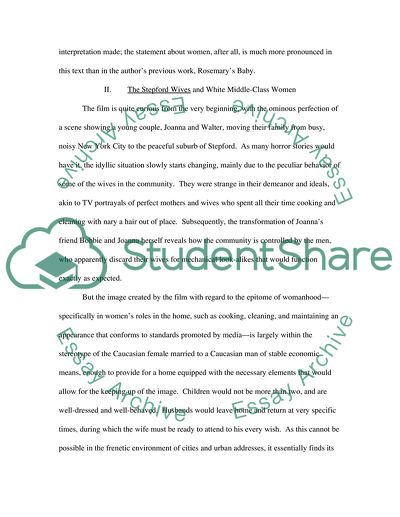Cite this document
(Feminism in 1970s America through Bryan Forbes the Stepford Wives Essay, n.d.)
Feminism in 1970s America through Bryan Forbes the Stepford Wives Essay. Retrieved from https://studentshare.org/visual-arts-film-studies/1723679-new-america-cinema-see-instructions-for-the-paper-topic
Feminism in 1970s America through Bryan Forbes the Stepford Wives Essay. Retrieved from https://studentshare.org/visual-arts-film-studies/1723679-new-america-cinema-see-instructions-for-the-paper-topic
(Feminism in 1970s America through Bryan Forbes the Stepford Wives Essay)
Feminism in 1970s America through Bryan Forbes the Stepford Wives Essay. https://studentshare.org/visual-arts-film-studies/1723679-new-america-cinema-see-instructions-for-the-paper-topic.
Feminism in 1970s America through Bryan Forbes the Stepford Wives Essay. https://studentshare.org/visual-arts-film-studies/1723679-new-america-cinema-see-instructions-for-the-paper-topic.
“Feminism in 1970s America through Bryan Forbes the Stepford Wives Essay”, n.d. https://studentshare.org/visual-arts-film-studies/1723679-new-america-cinema-see-instructions-for-the-paper-topic.


